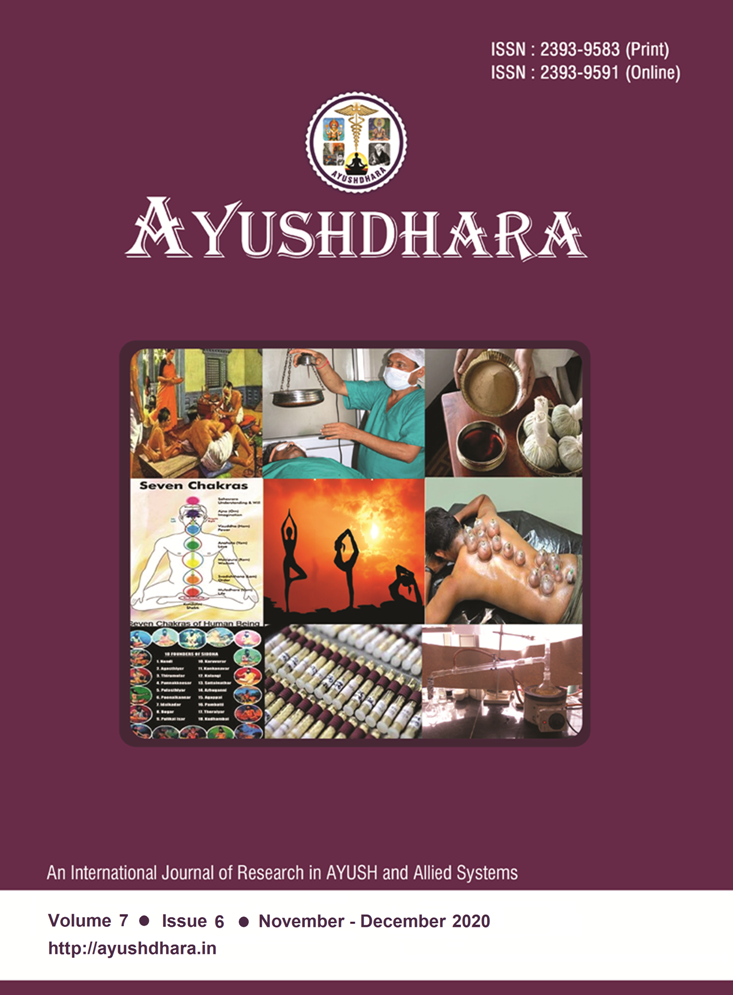STUDY OF RACHANA SHARIR DESCRIBED IN LAGHUTRAYEE IN COMPARISON WITH BRIHATRAYEE
Keywords:
Sharir Rachana, Brihatrayee, Laghutrayee.Abstract
Sharir Rachana and Kriya is essential for the knowledge of Chikitsa, Shalya and Shalakya. Depending upon the availability and complete knowledge of Ashtang Ayurveda the trio of creations of Acharya Susruta, Charaka and Vagbhata is regarded as Brihatrayee. Later on the other trio of Madhava Nidan, Bhavaprakash, Sharangadhara Samhita reffered as Laghutrayee. The knowledge of Sharir and medicine available in Brihatrayee; So, Ayurvedic terminologies explaining the Sharir aspects in Samhitas are many times mentioned by comparing it with the objects commonly seen in day-to-day life. This concept of comparison may be classified on Rachnatmaka groups.
This concept helps in knowing, understanding, learning and memorizing the important features in Rachana Sharir, as a whole. Acharyas has thus greatly contributed to the Vaidyas in studying the Sharir in the language of the layman.
Sharir stands for bodily, anything related to body. It is defined by Brihatrayee Acharyas as per their ideologies. Sharirvichaya is a detailed knowledge of Sharir Anga Pratyanga which is useful for Sharir Svasthya as well as Chikitsa. All the Acharyas consider Shadangas according to their different point of view.
Downloads

Published
How to Cite
Issue
Section

This work is licensed under a Creative Commons Attribution-NonCommercial-ShareAlike 4.0 International License.



